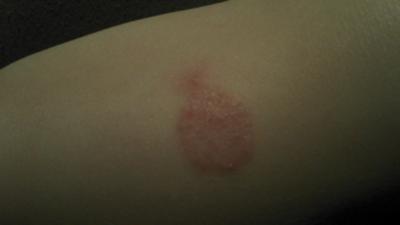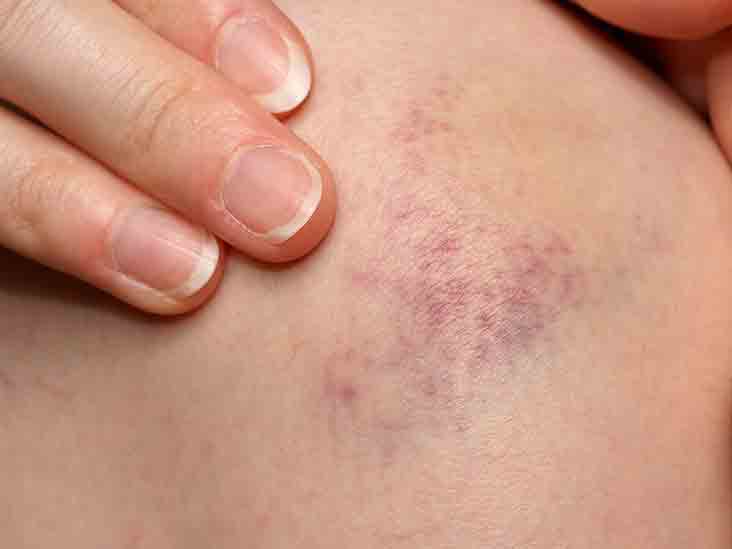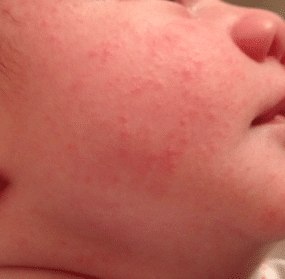

Letting your child spend time each day without a diaper, and patting (rather than rubbing) the skin dry after a bath are among the best treatment strategies.

Symptoms include bright, red, angry-looking diaper rash (along with bumpy, swollen skin). In young children, it’s often caused by candida albicans, a yeast-like fungus. Most children experience some form of fungal rash at one time or another. For more skincare tips for children with eczema, read this. Parents are also advised to avoid giving children with eczema long, hot baths and to moisturize their skin daily with an unscented ointment (ointments often stay on the skin longer than creams). Pediatricians often treat eczema with non-steroidal or steroid creams or ointments and sometimes suggest an antihistamine to relieve the itching. While there is no cure for this particular skin condition, nearly 60 percent of children outgrow eczema. Later in childhood, eczema is scalier and appears in the skin folds and creases found at the elbows, knees, wrists, and ankles.

Eczema often begins with itchy, red bumps on the forehead, scalp, or cheeks that spread to the arms or trunk in children 2–6 months of age. It is characterized by red, dry, peeling skin, and small, fluid-filled bumps that ooze a clear liquid. In the meantime, your child’s health care provider may recommend an antihistamine and cool compresses to relieve the itching.Įczema, also known as atopic dermatitis, is a chronic condition that often appears in children with a family history of allergic disease. Contact dermatitis isn’t contagious or life-threatening and the rash usually disappears within 2–4 weeks, assuming there is no further exposure.

It is important to try to identify the cause of the rash, so that your child can avoid future contact. Irritants may include soaps, laundry detergents, household cleaners, cosmetics, fragrances, jewelry, or plants. Symptoms can include redness and itching, along with bumpy, scaly, or swollen skin. Antibiotics are used to treat Lyme disease, and the sooner your child begins treatment, the better the outcome.Ĭontact dermatitis occurs when your child comes in contact with a substance that can cause skin irritation or an allergic reaction. If you see a bull’s-eye rash, contact your child’s health care provider right away. The affected skin may be warm to the touch, but it is seldom itchy or painful. The middle of the rash is pink or red, surrounded by a clear ring, and then another dark circle. This rash may begin at the site of a tick bite or elsewhere and can appear up to 30 days after your child is bitten, or not at all. If you live in an area where Lyme disease is prevalent, you will want to know the appearance of erythema migrans rash, a.k.a. Here are the 10 most common childhood rashes and when you should call the doctor: Some rashes are a sign of a viral infection that simply needs to run its course others are the result of an allergic reaction and still others are caused by some type of irritant.
#Pinpoint red dots on skin baby how to#
Common childhood rashes: how to identify them & when to worry And be aware that rashes known as petechiae and purpura (read on for more details) require immediate medical attention. In general, seek immediate medical attention if your child has fever, breathing difficulties, or persistent vomiting in addition to the rash. If a rash persists for several days, or if it worsens, contact your child’s health care provider. In fact, many rashes come and go before the staff at the doctor’s office can return your call (and quite often you never learn the cause of the rash). But you will soon discover that rashes are quite common in early childhood, and seldom require a visit to the doctor or the emergency room. The first time you see an angry red rash on your soft-skinned baby you are likely to panic.


 0 kommentar(er)
0 kommentar(er)
